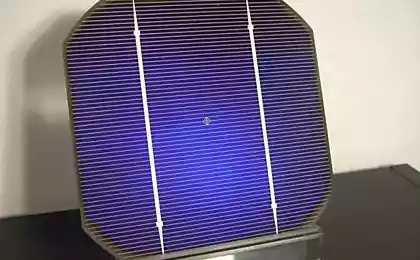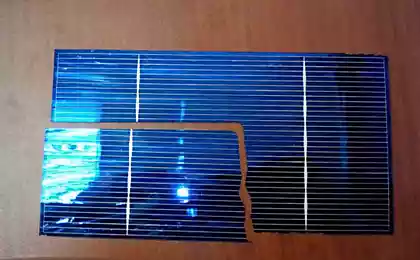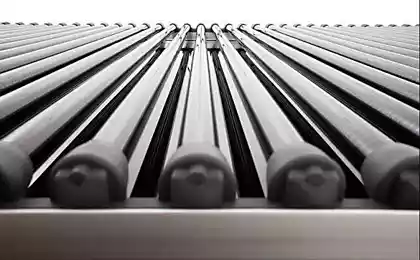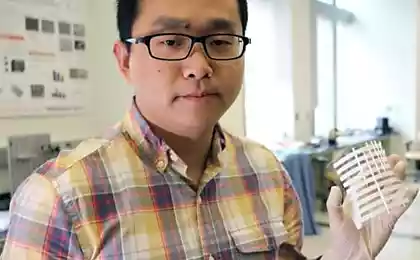412
Thermophotovoltaic cell
About photovoltaic (PV) cells solar panels today many have heard, but what about thermophotovoltaic cells? These cells accumulate heat, coming from infrared radiation, to generate electricity and can be more effective than a PV device, that is commonly used.
Most interesting is that the new cells continue to work even when night falls. Recently, scientists from the Australian National University and the University of California have developed a metamaterial that can produce a real revolution in the industry thermophotovoltaic cells.

Lead researcher Sergey Kruk first noted in their observations, the special properties of the metamaterial, which you can use to improve thermophotovoltaic cell. Sergey began to collaborate with scientists from the University of California at Berkeley (The University of California, Berkeley), specializing in the production of metamaterials. The result has been to emitter, significantly increase the efficiency thermophotovoltaic cells.
Metamaterials have properties that are not found in nature. To obtain a metamaterial, which is "light special", the researchers used gold, magnesium fluoride and silicon nitride. The resulting material under the influence of the infrared radiation heats up stronger than any other known materials. New cell remarkable by the fact that their work is not necessarily the direct solar radiation. At any level of illumination thermophotovoltaic elements able to produce energy.
Thermophotovoltaic cell remarkable by the fact that their work is not necessarily the direct solar radiation. At any level of illumination thermophotovoltaic elements able to produce energy
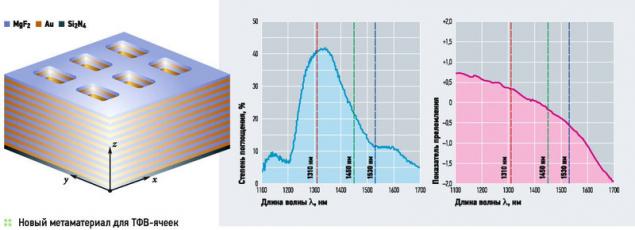
In addition, these cells really small. Sergey Krug said that the cut of a human hair can fit up to 12 thousand "bricks" which build the cell. "We can use these cells in cars, converting the heat from the engine into electricity," added crook.
Some scientists are of the opinion that metamaterials, developed at the University of California at Berkeley, may cause a real revolution in the field of PV panels. published
Source: www.c-o-k.ru/articles/termofotovoltazhnye-yacheyki
Most interesting is that the new cells continue to work even when night falls. Recently, scientists from the Australian National University and the University of California have developed a metamaterial that can produce a real revolution in the industry thermophotovoltaic cells.

Lead researcher Sergey Kruk first noted in their observations, the special properties of the metamaterial, which you can use to improve thermophotovoltaic cell. Sergey began to collaborate with scientists from the University of California at Berkeley (The University of California, Berkeley), specializing in the production of metamaterials. The result has been to emitter, significantly increase the efficiency thermophotovoltaic cells.
Metamaterials have properties that are not found in nature. To obtain a metamaterial, which is "light special", the researchers used gold, magnesium fluoride and silicon nitride. The resulting material under the influence of the infrared radiation heats up stronger than any other known materials. New cell remarkable by the fact that their work is not necessarily the direct solar radiation. At any level of illumination thermophotovoltaic elements able to produce energy.
Thermophotovoltaic cell remarkable by the fact that their work is not necessarily the direct solar radiation. At any level of illumination thermophotovoltaic elements able to produce energy

In addition, these cells really small. Sergey Krug said that the cut of a human hair can fit up to 12 thousand "bricks" which build the cell. "We can use these cells in cars, converting the heat from the engine into electricity," added crook.
Some scientists are of the opinion that metamaterials, developed at the University of California at Berkeley, may cause a real revolution in the field of PV panels. published
Source: www.c-o-k.ru/articles/termofotovoltazhnye-yacheyki
Vmotion 2.0 - Nissan showed the future of the connected car at the motor show in Detroit
Hyundai will release a new hydrogen-powered crossover and bus






